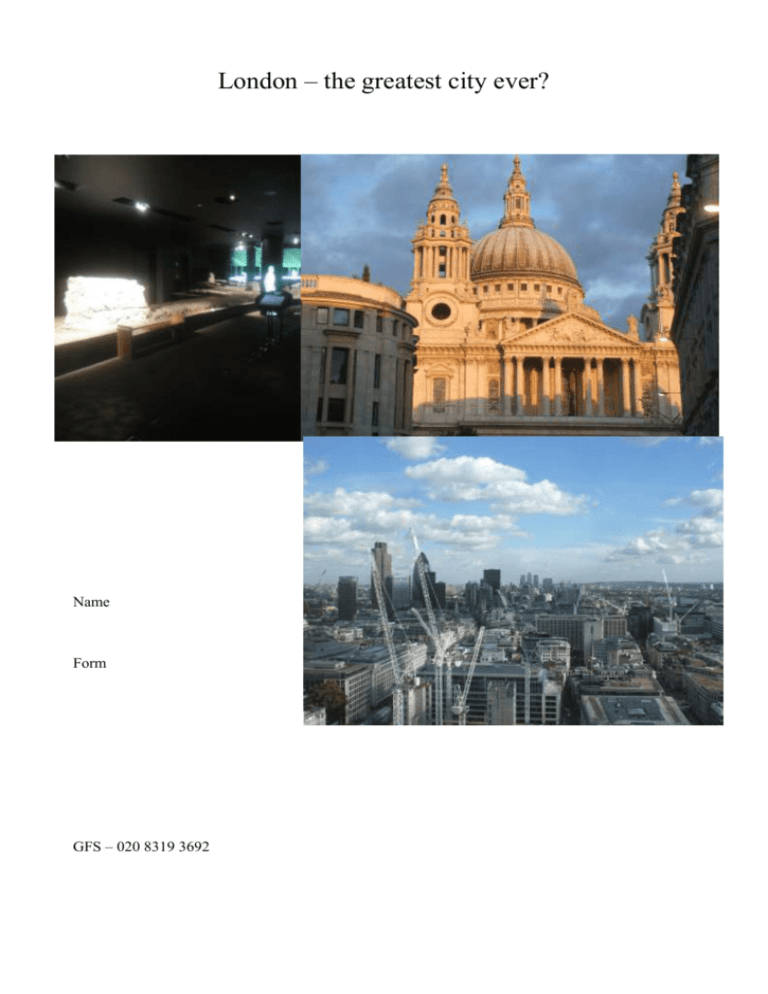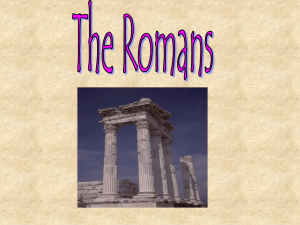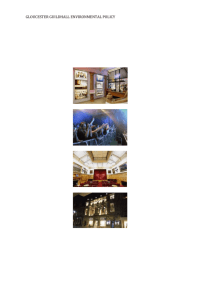London – the greatest city ever? Name Form GFS – 020 8319 3692
advertisement

London – the greatest city ever? Name Form GFS – 020 8319 3692 To make the most out of this day consider how you can show: Curiosity – by looking carefully at what’s around you, noticing and observing, investigating and questioning, thinking hard. Awe – stop to try to sense how miraculous it is to walk where Roman gladiators, medieval guildsmen and Catherine of Aragon have walked. Common sense and a consciousness of your safety – London is a busy, bustly, traffic-filled mess The competition: there are a maximum of 100 points available for the day. You will be tested individually on a random sample of questions on your return to school. The points are divided up as follows: 30 available visiting Guildhall, Guildhall Art Gallery, Roman Amphitheatre, St Lawrence Jewry 20 available as we look around London 20 reward being observant. They are in random order and unsigned – notice, read, everything. 20 reward to deeper thinking about how the city has changed. Think about them during the day and complete them on your return journey 10 reward conducting yourself with pride throughout the day: behaving safely, returning punctually, being good ambassadors for the school. The winning group will receive a history gift – to be announced on your return to school. Guildhall – the historic centre of the city A) The Amphitheatre 1) When was London founded by the Romans? 2) When was the Roman Amphitheatre discovered? 3) How many people could the Amphitheatre seat? 4) What were the chambers beside the way you walk into the Amphitheatre used for (two things)? 5) What proportion of the highest estimate of the population of London at that time was that? 6) When was Roman London abandoned? 7) Whose lives mattered to the Romans? 8) Why did gladiator fighting end? B) The City of London Gallery floor 1) What did Romans write on normally? 2) What did Romans write curses on? 3) On the 'Agas Map' - how many bridges were there across the Thames in 1561? 4) On the 'Agas Map' - how did people entertain themselves (clue – have a look on the South Bank of the river)? 5) What can you identify on the map which is still visible now? 6) Who was the first king to grant freedoms to London? 7) What three clauses of Magna Carta are still in effect? 8) What was the Guildhall used for in 1914? C) The Art Gallery 1) Why was a new bridge needed in 1876? (Two reasons) 2) Which part of Tower Bridge was finished first? 3) What was the main use of the river in 'The Pool of London from Tower Bridge'? 4) What did Niels Lund call London in his 1904 painting? 5) What was added to the river near Tower Bridge in the 1950s for people to play on? 6) There are five busts outside the Art Gallery; explain why one of them (other than Shakespeare) is important to London’s history. D) Guildhall 1) What virtues did Wellington show, according to his memorial? 2) Who are the figures on the balcony? 3) What event happened in Guildhall last weekend? 4) What is the roof made of? 5) Who won victories at the Nile and Trafalgar? E) St Lawrence Jewry 1) How did the church get its name? 2) What happened to the church on 9th December 1940? 3) Where in Greenwich does it remind you of? Why? London Walk 1) Who founded this building? 2) What is this building? 3) Who lives in this building? 4) What did the Romans build in in this area between AD100 and AD 200? 5) This is the only surviving what? 6) What happened to the medieval St Paul's Cathedral? 7) To whom is this monument dedicated? 8) What was this building before it became an art gallery? 9) Which two historic figures stayed in this building? 10) Name two things this building has been (apart from a pub). 11) What kind of crimes got you imprisoned in the 'Clink' prison? 12) Who once lived in this building? 13) This is a replica of the ship in which Sir Francis Drake did what? 14) Who had their own special entrance to the Tower of London by river? 15) When was the Middle Tower built? 16) Why is this 202 feet tall? 17) Who worked here in Roman times? 18) When was the first market on this site? 19) When does the current building date from? 20) What is the common name for the building with the address 30 St Mary Axe? Random questions These may come anywhere during the day. To reward your observation, each is worth two points. 1) The 'Witchbottle,' made of stoneware, was believed to defend the body against plague – but where was it made? 2) What happened to Anne Askew? 3) What was London plagued with when Chris Orr was young? What caused them? 4) What happens to vellum (baby lamb skin) in fire? 5) Why did London Wall reappear? 6) How did Cheapside get its name? 7) How many soldiers worked for the Roman governor? 8) Why were there no frost fairs after 1814? 9) How did mudlarks make a living? 10) What is this? Where is it? Why is it there? Thoughtful questions There are no correct answers to these questions – you need to justify your ideas carefully. What is the modern equivalent the Roman Amphitheatre? Why? Which one building best symbolises the changes in London since it was founded? Why? You've probably seen London's crest a lot today. Imagine London were choosing a new crest. Draw the crest and explain your choice. What have been the three most significant turning points in London's history? Why? 1) 2) 3) Who (which individual) has had the greatest impact on London, from what you have seen today? Why? What is the most fascinating, awe-inspiring or amazing thing you learned or noticed today, not asked about in this booklet?











